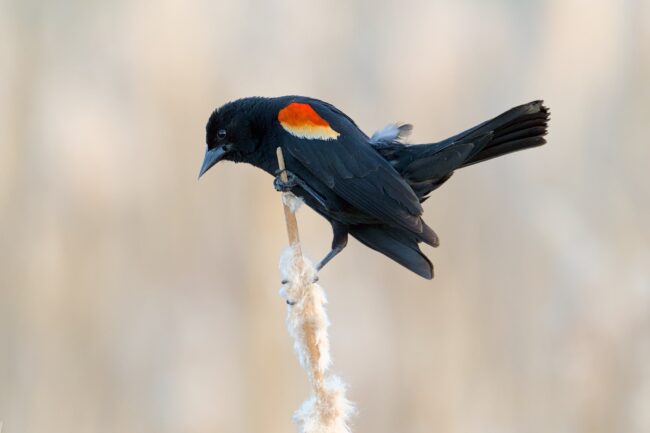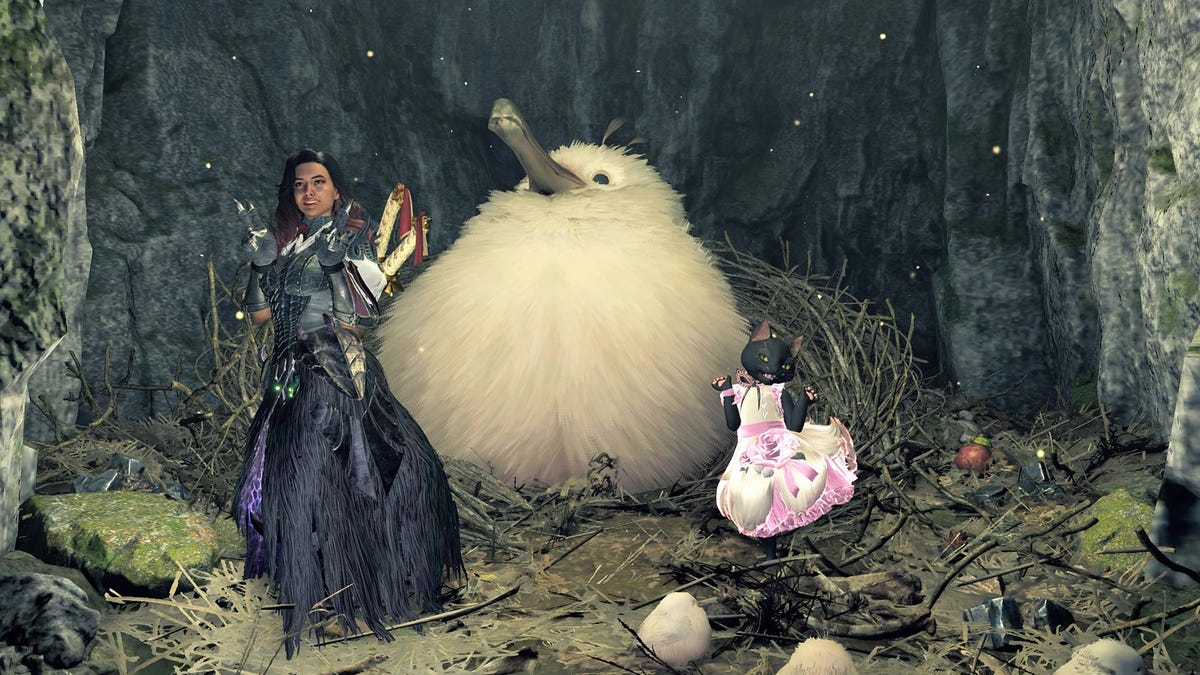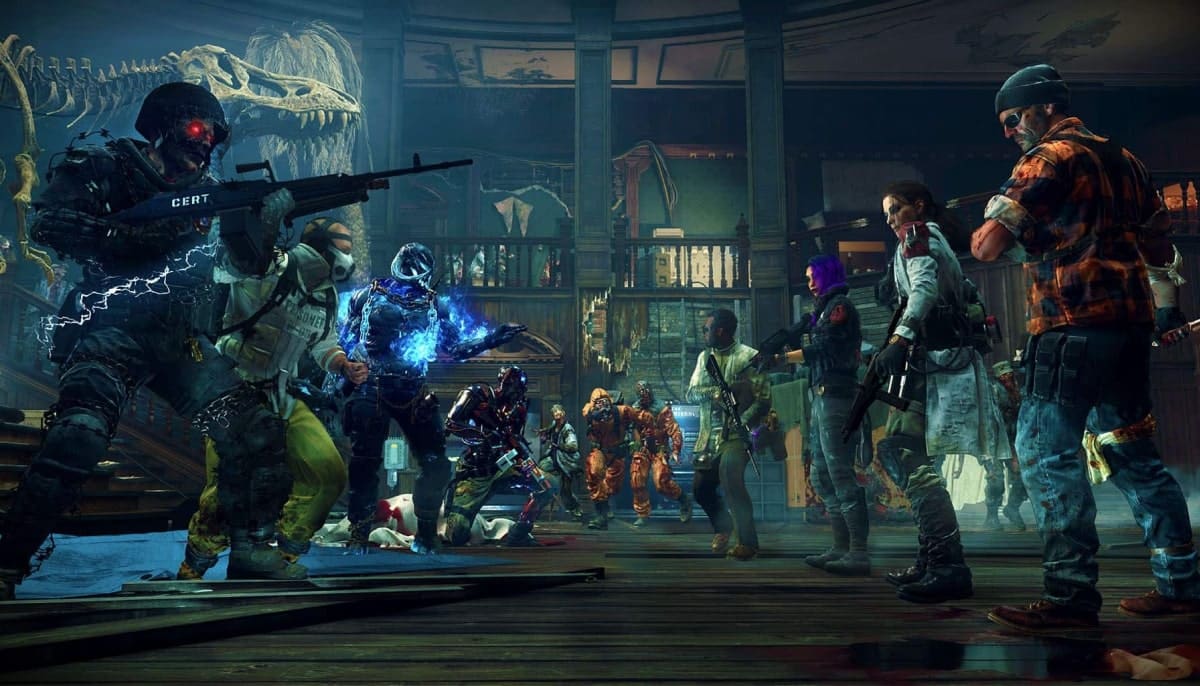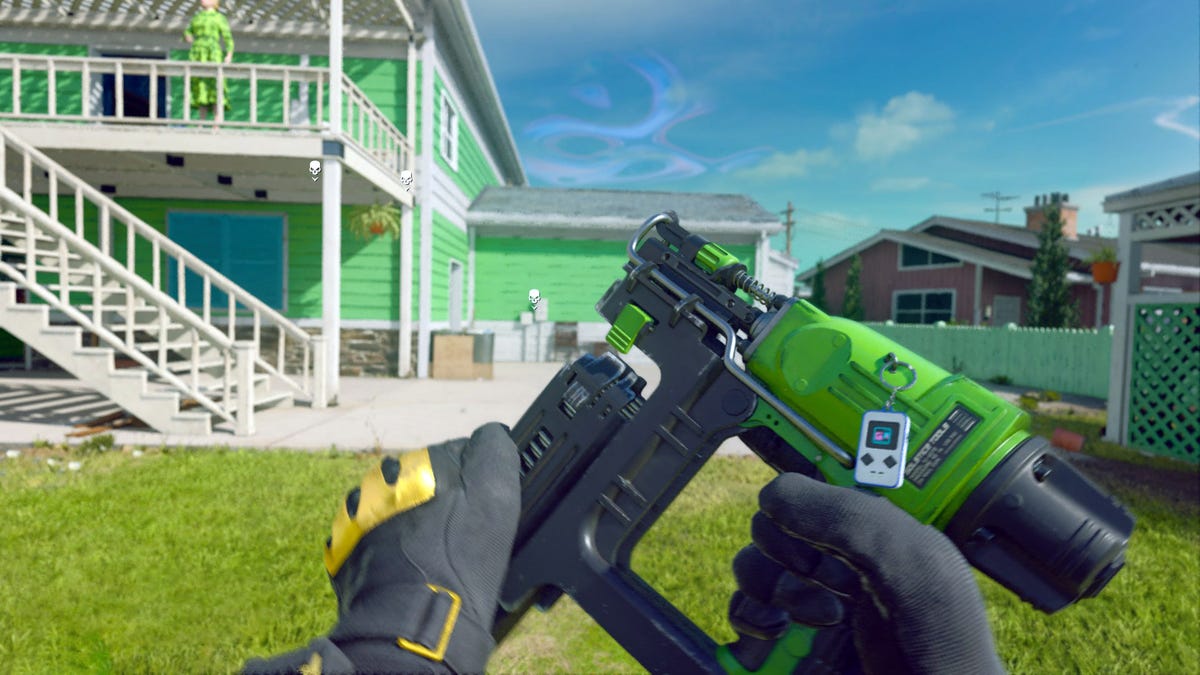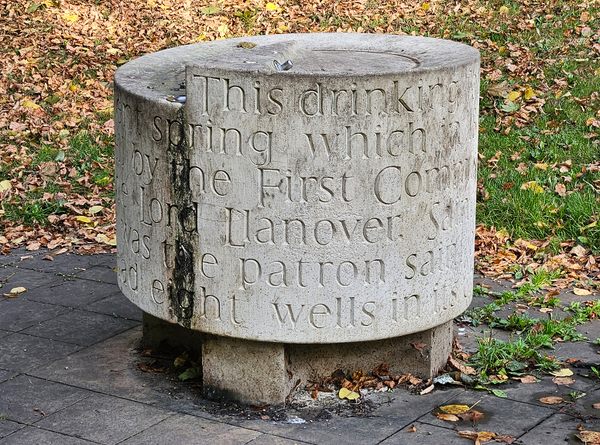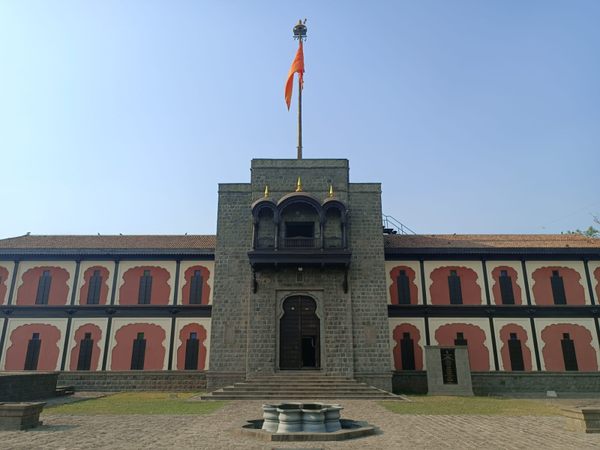How the Rocky Mountain Locust Plague Spawned Federal Disaster Relief
Listen and subscribe on Apple Podcasts, Spotify, and all major podcast apps. Dylan Thuras: Hey Amanda, how are you doing? Nice to see you. Amanda McGowan: Hey Dylan, nice to see you too. I have a little bit of a random question to start with, but I wanted to know if you have any experience with cicadas. Dylan: Yeah, sure. I grew up in Minnesota, so they hatch there. They hatch in New York where I live now. I actually really like cicadas. I think of them as like one of the sounds of the summer. You know, they have this kind of late summer, August drone. It’s a little spooky, but yeah, cicadas are cool. Amanda: Yeah, well I ask because I feel like every couple years there’s some sort of cicada boom cycle. And they have this reputation, as you were saying, of being sort of cuddly and cute, or at least if not that far— Dylan: They’re harmless. Amanda: They’re harmless. Yeah, totally. Dylan: They don’t do much to people. Amanda: But, today I want to talk to you about a time in the Midwest when giant clouds of bugs were not so harmless or cuddly or cute, but actually were quite destructive. Dylan: I see. Amanda: And on that note … Dylan: Dun dun dun! Amanda: That’s right. Get ready. I want to show you a photo. So can you see the photo that I’m showing you here? Dylan: Yes. Amanda: And what does it look like? Dylan: So it looks to be—it’s like a carving. Kind of looks like maybe a church carving. It’s got a saint. There’s light coming down on a kind of a saintly figure on a cloud. Is that the Virgin Mary? It looks like it could be. Amanda: I think it is her. Dylan: And then to either side—I sort of see where we’re going here—to either side of her are these gigantic grasshoppers. Amanda: Yeah, you’re absolutely right. This is a carving from a church in Cold Spring, Minnesota. And as you can see, there is—I believe this is the Virgin Mary. She’s kind of floating on a cloud and she’s coming down and kind of placating these enormous human-sized grasshoppers. Dylan: I’m from Minnesota and I feel like I should know about this. What is happening here? Amanda: Oh, well, I can’t wait to tell you. This is the story of the Great Rocky Mountain Locust Plague of the 1870s. Dylan: All right. Well, I can’t wait to hear about what happened to my poor home state. I’m Dylan Thuras. And I’m Amanda McGowan. Dylan: And this is Atlas Obscura, a celebration of the world’s strange, incredible, and wondrous places. And today we are going to talk about the time, apparently, locusts ate through the entire Midwest. Apparently, they destroyed much of Midwestern America at some time in the 1870s. So we are going to go into this locust plague. This is an edited transcript of the Atlas Obscura Podcast: a celebration of the world’s strange, incredible, and wondrous places. Find the show on Apple Podcasts, Spotify, and all major podcast apps. Dylan: So you said the Great Locust Plague of the 1870s. What happens? What is this locust plague? Amanda: Yeah. So, imagine for a minute that you are a farmer in Minnesota in the summer of 1873. You’re out on your farm. It’s summertime, sun’s shining, it’s a beautiful, warm day. But you’re looking out over your field and on the horizon, you see this silvery gray cloud that almost looks like a snowstorm approaching. And you’re like, “A snowstorm? Like, what the heck? It’s June.” But then you realize that the glinting, the shining grayness of the cloud is actually the sun glinting off of like millions and millions of locust wings. And then you hear it. It’s like this hum, this roar of wings that is coming right toward you. And of course, this is not snow. This is a cloud of locusts barreling down on your farm. Dylan: This is a terrifying scene you’re setting here. Amanda: Yeah. The horror movie music encroaches. Dylan: One hundred percent horror movie scene. Like, to see them and have it be silent and then to slowly have the droning sound of a million, a hundred million wings. OK. So locusts, creepy. But you said these locusts were hungry. Amanda: They’re so hungry. Yeah. All right. Dylan: What are these locusts coming for? Amanda: So, it’s more of what they’re not coming for. I mean, they eat almost everything. They’re going to eat crops, but they’re also at this period, they were noted to eat through leather, wool, clothing. People reported that they ate the clothes off of their backs. They ate all of the food that was stored inside of people’s homes in barrels that they somehow got inside. There was this kind of like black humor that started circulating that said that the bugs would eat everything except the mortgage. Basically, that was all that they would leave behind. Dylan: Dude, this is—can you imagine a swarm of bugs landing on you and starting to eat the clothes off your, like—not only is your livelihood being destroyed in front of your eyes, but you and your home are under attack by an alien swarm. Amanda: And there’s no escape. And as we were talking about

Listen and subscribe on Apple Podcasts, Spotify, and all major podcast apps.
Dylan Thuras: Hey Amanda, how are you doing? Nice to see you.
Amanda McGowan: Hey Dylan, nice to see you too. I have a little bit of a random question to start with, but I wanted to know if you have any experience with cicadas.
Dylan: Yeah, sure. I grew up in Minnesota, so they hatch there. They hatch in New York where I live now. I actually really like cicadas. I think of them as like one of the sounds of the summer. You know, they have this kind of late summer, August drone. It’s a little spooky, but yeah, cicadas are cool.
Amanda: Yeah, well I ask because I feel like every couple years there’s some sort of cicada boom cycle. And they have this reputation, as you were saying, of being sort of cuddly and cute, or at least if not that far—
Dylan: They’re harmless.
Amanda: They’re harmless. Yeah, totally.
Dylan: They don’t do much to people.
Amanda: But, today I want to talk to you about a time in the Midwest when giant clouds of bugs were not so harmless or cuddly or cute, but actually were quite destructive.
Dylan: I see.
Amanda: And on that note …
Dylan: Dun dun dun!
Amanda: That’s right. Get ready. I want to show you a photo. So can you see the photo that I’m showing you here?
Dylan: Yes.
Amanda: And what does it look like?
Dylan: So it looks to be—it’s like a carving. Kind of looks like maybe a church carving. It’s got a saint. There’s light coming down on a kind of a saintly figure on a cloud. Is that the Virgin Mary? It looks like it could be.
Amanda: I think it is her.
Dylan: And then to either side—I sort of see where we’re going here—to either side of her are these gigantic grasshoppers.
Amanda: Yeah, you’re absolutely right. This is a carving from a church in Cold Spring, Minnesota. And as you can see, there is—I believe this is the Virgin Mary. She’s kind of floating on a cloud and she’s coming down and kind of placating these enormous human-sized grasshoppers.
Dylan: I’m from Minnesota and I feel like I should know about this. What is happening here?
Amanda: Oh, well, I can’t wait to tell you. This is the story of the Great Rocky Mountain Locust Plague of the 1870s.
Dylan: All right. Well, I can’t wait to hear about what happened to my poor home state.
I’m Dylan Thuras.
And I’m Amanda McGowan.
Dylan: And this is Atlas Obscura, a celebration of the world’s strange, incredible, and wondrous places. And today we are going to talk about the time, apparently, locusts ate through the entire Midwest. Apparently, they destroyed much of Midwestern America at some time in the 1870s. So we are going to go into this locust plague.
This is an edited transcript of the Atlas Obscura Podcast: a celebration of the world’s strange, incredible, and wondrous places. Find the show on Apple Podcasts, Spotify, and all major podcast apps.

Dylan: So you said the Great Locust Plague of the 1870s. What happens? What is this locust plague?
Amanda: Yeah. So, imagine for a minute that you are a farmer in Minnesota in the summer of 1873. You’re out on your farm. It’s summertime, sun’s shining, it’s a beautiful, warm day. But you’re looking out over your field and on the horizon, you see this silvery gray cloud that almost looks like a snowstorm approaching. And you’re like, “A snowstorm? Like, what the heck? It’s June.” But then you realize that the glinting, the shining grayness of the cloud is actually the sun glinting off of like millions and millions of locust wings. And then you hear it. It’s like this hum, this roar of wings that is coming right toward you. And of course, this is not snow. This is a cloud of locusts barreling down on your farm.
Dylan: This is a terrifying scene you’re setting here.
Amanda: Yeah. The horror movie music encroaches.
Dylan: One hundred percent horror movie scene. Like, to see them and have it be silent and then to slowly have the droning sound of a million, a hundred million wings. OK. So locusts, creepy. But you said these locusts were hungry.
Amanda: They’re so hungry. Yeah. All right.
Dylan: What are these locusts coming for?
Amanda: So, it’s more of what they’re not coming for. I mean, they eat almost everything. They’re going to eat crops, but they’re also at this period, they were noted to eat through leather, wool, clothing. People reported that they ate the clothes off of their backs. They ate all of the food that was stored inside of people’s homes in barrels that they somehow got inside. There was this kind of like black humor that started circulating that said that the bugs would eat everything except the mortgage. Basically, that was all that they would leave behind.
Dylan: Dude, this is—can you imagine a swarm of bugs landing on you and starting to eat the clothes off your, like—not only is your livelihood being destroyed in front of your eyes, but you and your home are under attack by an alien swarm.
Amanda: And there’s no escape. And as we were talking about before, this is summertime. You go outside, it’s supposed to be sunny. The swarms were so thick that they would basically blot out the sun. It would be just dark and everything would be getting eaten. It was a grim situation.
Dylan: Dude, totally apocalyptic.
Amanda: Yeah.
Dylan: This is a stupid question. I kind of think of a locust as just like a mean grasshopper. Is that right? Like, I don’t exactly know the difference.
Amanda: No, that’s totally right. So, in this particular situation, we’re talking about a species called the Rocky Mountain locust. They’ve been in North America forever. There’s actually this really cool glacier out in Montana that’s called Grasshopper Glacier because there’s all these frozen Rocky Mountain locusts.
Dylan: Shout out to—I don’t know what episode number it is, but we have an episode about Grasshopper Glacier.
Amanda: We will link in the description.
Dylan: Yes, we will.
Amanda: But, you’re right. A locust is a kind of grasshopper, but under specific circumstances. In normal scenarios, when grasshoppers are going about their business, whatever normal year, that’s a grasshopper.
Dylan: They’re so chill. Grasshoppers are chill. I see grasshoppers all the time. They’re cute. They hop. They’re chill. They’re not a problem.
Amanda: Totally chill. In normal years, yes. But, under certain conditions—so like if there are a lot of grasshoppers hatched in a particular year, they can essentially hulk out. They physically change. They get bigger, they get stronger. Sometimes they even change colors. But crucially, they have behavioral changes. If there’s a lot of grasshoppers born in a specific year, they start to get stressed that there’s not going to be enough food. They start to swarm. They start looking for food. And that’s how you get locust plague, basically.
Dylan: There’s this thing with bacteria and bioluminescence called quorum sensing. And it’s basically like when you get enough together, they change their behavior. So it’s like, what makes you sick, actually. You can have a little bit of E. coli and you’re fine, but if you get a lot, it makes you very ill because the concentration changes their actual behavior, how they’re acting. And so this is what you’re talking about. You’re talking about kind of quorum sensing for grasshoppers. Like if there are enough of them, they go into this very different behavior pattern. So is that what was going on in 1873?
Amanda: 1873 was a big locust year. They had a very wet spring, so there were a lot of eggs being hatched. But then the year rolled around and winter came and people were like, “Thank God that’s over.” But then 1874 came and the spring was also same conditions, very wet spring, lot of grasshoppers being born. And this time, the summer was very dry and hot. So there wasn’t a lot of food and they had to go farther and farther to find food. So you ended up getting this swarm that, I mean, the size estimate here, if you take the state of Colorado, the square mileage of Colorado—
Dylan: It’s a big state too.
Amanda: —and double it. That’s the size of the swarm that we’re talking about.
Dylan: My God!
Amanda: Can you imagine that?
Dylan: Oh my God.
Amanda: Yeah.
Dylan: Okay, so a trillion, trillions of locusts are descending on your town.
Amanda: Dropping in, yeah.
Dylan: They’re literally blotting out the sun. They’re eating the clothes off your back. What do you do? How did people deal with this?
Amanda: Oh my God. I mean, as you can imagine, this kind of impacted every area of life. And this is also impacting a huge swath of the United States. The Midwest, the Great Plains. And for starters, I mean, people started coming up with all of these home remedies of things that they were trying to do to get the locusts off of their crops, out of their home. People would put quilts or fabric down on top of their crops, but then the locusts would eat through them, so that wasn’t going to work. They started experimenting with digging big ditches and setting fires to see if that would deter the locusts in some way. That also didn’t really seem to work. My favorite innovation was something called the hopperdozer, which is when you took a giant sheet of metal and covered it with something sticky like tar and then basically dragged it through your field so that the locusts or their eggs would stick to it.
Dylan: You’re trying to flypaper an entire field of a hundred million locusts.
Amanda: Exactly.
Dylan: Good luck.
Amanda: Yeah. As you can imagine, that also didn’t really work that well.
Dylan: This really is—it’s not just visually apocalyptic and super creepy, but all the food is being eaten, I would assume.
Amanda: Yes.
Dylan: People’s entire fields are being eaten within hours or something. What did people do? What did they eat?
Amanda: Yeah, that was the big question because as you pointed out, I mean, crops are being absolutely demolished. There’s some wild estimates from the 1874 year—which was a really, really bad year—that put the total amount of damage at something like $50 million, I think in 1874 dollars. But basically, 75 percent of the entire U.S. farm output that year was destroyed by locusts.
Dylan: Wow.
Amanda: And people were like, “What do we eat?” Like, “This is our food,” you know? So, I mean, there were lots of different ideas. In Missouri, there was this one entomologist who came up with like all these recipes of like—
Dylan: Well, we can’t eat the crops. Can we eat the locusts?
Amanda: Yeah. Literally. So he’s like, you know, they’re not that bad if you put them in butter or you can make them in soup and stuff. And I think, you know, some people did that. There were some interesting examples in Minnesota. There is this one farmer in a community who figured out that there was a lot of ginseng root growing that was not being touched by the grasshopper. So he convinced a lot of people in the town to start foraging and selling that. That helped people keep a little bit. But really, it seemed like a lot of people just struggled. I had trouble finding exact numbers, but there were references to, you know, families starving. That’s indicated on some headstones in these areas that were affected. And a lot of people abandoned their farms. If they were recent settlers in the Midwest or the Great Plains, they picked up their space.
Dylan: I would go back home so quick. Like if you got there in—
Amanda: In the middle of the plague, you’re like, “Oh my God!”
Dylan: “Ready to start my farm. Just a kid from New York City here to be a settler in Minnesota!” I would just be like, “No, no, not for me. I’m going back. I’m all good.”
Amanda: Yeah. They didn’t mention the locust plague on the advertising materials.
Dylan: Yeah, totally. I mean, this is like a national emergency. What did the government do? Did politics get involved? Was there any relief for these people? Well, for starters, a lot of the states involved passed basically bounty laws. So in Minnesota and Kansas, the states passed laws where you had to go out and spend a certain amount of time—I think in some cases it was like a week out of a month or like a couple of days out of the week—just going out and killing grasshoppers. They were like, “You’re on kill patrol. You just need to get out killing.” And if you weren’t out, then you could be fined and probably even thrown in jail. I’m not totally sure about that.
Dylan: One day a week.
Amanda: It’s grasshopper day.
Dylan: It’s just like, “Well, it’s Tuesday. It’s grasshopper killing day. And if I don’t do it, I’m going to be arrested.”
Amanda: But yeah, I mean, as we were talking about, the scale was enormous and people were suffering. I mean, their crops, their livelihood, their food. And at first there was a lot of reluctance among state leadership to kind of even acknowledge the scale of what was happening because they still wanted people to move out West. They wanted investment to come. They didn’t want to be like, “Don’t come here. There’s a giant cloud of locusts that’s going to eat your clothes.”
Dylan: It is bad PR. I’m going to say.
Amanda: It’s super bad PR.
Dylan: If someone tells you this is what’s waiting for you, you’re like, “This sounds really awful.”
Amanda: They were like, you know, “It’s only one or two locusts. It’s nothing crazy. It’s fine.”
Dylan: “Just come on out, move on out and you’ll be fine.”
Amanda: But then of course, you know, there were more calls for the government to help people. I mean, when you have that many people suffering. And it became this whole ideological thing because on the one hand, it was a natural disaster, it wasn’t like anybody messed up. But on the other hand, there was a lot of resistance to the idea of the state or the federal government even giving out aid because they were like, “Well, it’s going to make farmers soft. You know, we don’t want those farmers getting too soft.”
Dylan: Said some politician in Washington, D.C., very far away from the locust plague.
Amanda: He’s not picking buttered locusts out of his stew for breakfast. But eventually, as things went on, the calls got greater and greater. And the federal government did step in and provide some relief to farmers and helped—I think it was monetary relief to help them replant. And that was a big moment. I mean, I think it was kind of the first time—it was one of the first times that federal relief was provided in reaction to a natural disaster on sort of a larger scale. There had been more isolated incidents like there was a fire, I think, in Maine that prompted the federal government to give some kind of relief out. But some scholars argue that this incident with the locust plague kind of sets the stage for the way that we even think about federal disaster relief today.
Dylan: Wow. I would not have guessed a locust plague as being the origin of federal disaster relief. It’s just not a thing we spent a lot of time worrying about today. OK, so how does this lead to that picture we were looking at? How does this lead to the grasshopper church? What is the deal with that place?
Amanda: So, as we mentioned, 1873 was a bad grasshopper year, 1874 was really bad, and it honestly kept coming back. 1875, 1876, 1877, there were years and years of the swarms returning. And so you can imagine people are getting super desperate. And you know, not surprisingly, in times of trouble and desperation, people turn to spirituality and religion. And in the spring of 1877, the governor of Minnesota actually implemented a statewide day of prayer, just to say, “Everybody pray for the locusts to go away, and we’ll see what happens. We’re at the end of our rope here.”
Dylan: I love that—
Amanda: Thoughts and prayers!
Dylan: —the birth of disaster relief also comes with hopes and prayers, you know what I mean?
Amanda: Literally.
Dylan: It’s like, I assume, hopes and prayers, locusts will go away. All right. Yeah.
Amanda: So that was one approach. And around that same time, to go back to the fabulous stone carving that we were talking about earlier, there was this German Catholic community near Cold Spring, and they decided that they were going to build this chapel as kind of like an offering. I don’t know if that’s the proper terminology, but the idea was like, we’re going to show our dedication to God by building this chapel, and hopefully in return, the locusts will go away.
Dylan: I mean, honestly, we were kind of—we’re joking about hopes and prayers, but like, that is a biblical plague.
Amanda: Yeah, literally.
Dylan: It’s legit. That is actually a biblical plague, and it would feel like, I mean, if you were a farmer, you would feel like you were being punished.
Amanda: I think.
Dylan: By God.
Amanda: And especially because it kept happening over and over, you know?
Dylan: OK, so they build this church, you know, did it work? Like I said, we don’t spend a lot of time worrying about locusts today. What, did they come back? What happened?
Amanda: Yeah. Well, to make two apocryphal stories, the locusts went away the day after the construction began on the locust chapel. Take that maybe with a grain of salt, honestly. But the locusts really did go away after 1877. There was also a late spring snowstorm that year, which maybe helped, in addition to all the other things that were going on. But that was the end of the great Rocky Mountain locust plague of the 1870s.
Dylan: So, you know, we were talking about cicadas at the start of this, and cicadas are on these kind of cyclical population booms, you know, they bury themselves and they come out. And this is a thing—we have caterpillars in this area that also have these kind of cyclical booms, and actually the caterpillars are really gross and annoying, and they’re itchy, and I don’t—I hate them.
Amanda: Is it those, like, orange and black ones?
Dylan: The brown, orangey—and they’re like, they just fall from the tree. Sometimes it sounds like it’s raining, because there’s little caterpillar poops, and you’re just like, “Ew, I don’t like these.” So that’s actually probably the most analogous thing. But what’s the deal? Are locusts still a problem? How do we deal with these things in a more modern era or after this plague? How did we try and, you know, not have this happen again and again?
Amanda: Yeah, well, it’s really interesting. After the 1877 season ended, the Rocky Mountain locusts never returned in the same numbers that they had during those 1870s years. And actually, by the early 1900s, they were considered extinct. I mean, they kind of just dwindled and then disappeared. And there’s a little bit of a lingering mystery or question about exactly why this is. But the leading theory, which I think is pretty accepted today, is from this guy named Jeffrey Lockwood. And his theory basically is that—so, as we were talking about these Rocky Mountain locusts, their kind of base is in the Rocky Mountains in these river valleys in Montana and Wyoming. And that’s where they lay their eggs. That’s kind of where they hatch and then, you know, whatever. But over time, as European settlers and farmers moved west, they were moving into those very fertile areas and started plowing and changing the land. And his theory is basically like, that’s why the population crashed, because people were plowing and changing the areas where they hatched.
Dylan: Right. It’s like all this farmland is being created. There’s like animals grazing. There’s like—yeah, OK. That’s wild. And it’s amazing that like, you know, short of being carved into this chapel in Minnesota, that’s sort of their—this is their legacy, I guess, is that little church in Minnesota.
Amanda: Yeah, totally. And that little church that they built in the 1870s, unfortunately, the one that they built is no longer there. It was destroyed by a tornado in the 1950s in another biblical attack.
Dylan: The Midwest, man. This is a really bad sale for the Midwest. It’s like, if you don’t have locusts, you’ll get swept away in a tornado.
Amanda: Yeah. Just don’t get too attached to your clothes or like your farm or anything like that. But after the tornado, the community did come together, they rebuilt the church, and that’s when they added this super cool granite carving that we talked about. And so that’s Mary and the Grasshoppers. And you can still visit it today. Check it out.
Dylan: What a crazy story. Next time I’m home, I’m going to drive up and check out this church.
Amanda: Oh, yeah. If you do, take some pics.
Dylan: Definitely. I hope they do Grasshopper-themed services. I hope that every sermon touches upon the great locust plague of the 1870s.
Amanda: They play audio of the swarm coming. Everyone gets scared.
Dylan: Then the priest comes in and the lights turn up, the swarm disperses, the drone goes away.
Amanda: If you cannot get enough of Rocky Mountain Locusts, there’s actually another episode in the Atlas Obscura podcast archives that might whet your appetite. It’s about Grasshopper Glacier, which is this glacier in Montana that is full of embedded Rocky Mountain locusts. It’s a cool story. It involves an opera about the locust plague written by an entomologist. Check it out. There’s a link in the episode description.
Listen and subscribe on Apple Podcasts, Spotify, and all major podcast apps.
Our podcast is a co-production of Atlas Obscura and Stitcher Studios. The people who make our show include Doug Baldinger, Chris Naka, Kameel Stanley, Johanna Mayer, Manolo Morales, Baudelaire, Amanda McGowan, Alexa Lim, Casey Holdford, and Luz Fleming. Our theme music is by Sam Tindall. If you like our show, please give us a review and a rating whenever you get a chance and wherever you get your podcasts.















































